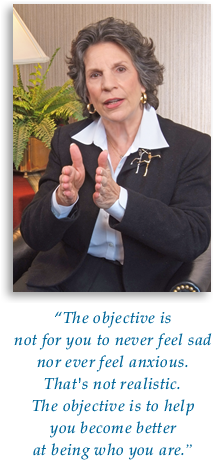DEPRESSION & ANXIETY

Our emotional responses to life fall within a continuum between depression and anxiety. Certainly not everyone falls smack in the middle - most people fall a little to one side or the other. It's when we get outside our comfort zone, on either side of middle, that we experience unease, sometimes quite severe.
The objective is not for you to never feel sad nor ever feel anxious. That's not realistic. The objective is to help you become better at being who you are.
After ruling out physical causes, you may qualify for a diagnosis of depression if you have five or more of the following symptoms daily for a period of two weeks or more: feeling a depressed mood; decreased interest or pleasure in your activities; a significant weight gain or loss without dieting or changing exercise habits; insomnia or hypersomnia; noticeable agitation or lethargy; fatigue; excessive or inappropriate guilt; inability to concentrate or make decisions; and recurrent thoughts of death.
You may qualify for a diagnosis of anxiety if you have spoken with your physician and they have ruled out a physical cause for your condition.
Symptoms must have lasted for six months or more and included unrealistic or excessive worry in two areas of your life, and at least six of the following symptoms:
- trembling, twitching or feeling shaky
- muscle tension, aches or soreness
- restlessness
- easily tired
- shortness of breath or smothered sensation
- heart-rate irregularities
- sweating or clammy hands
- dry mouth
- dizziness
- abdominal distress
- flushing
- frequent urination
- lump in throat
- feeling on edge
- exaggerated startle response
- difficulty concentrating or going blank
- trouble with sleeping
- irritability
